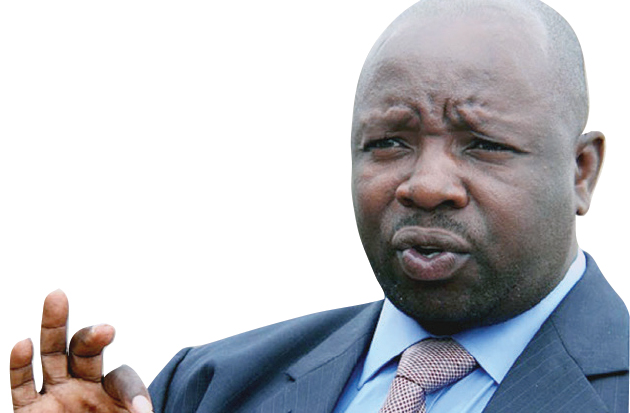EDITORIAL COMMENT: Food-for-work programme instils spirit of responsibility

Up to four million people are facing hunger, the result of the second successive drought to hit the country.
Among the food insecure people are those who didn’t harvest enough for their consumption, but earn a regular income with which to buy food if it is available on the market. There are others, the second group, who don’t have an income — the elderly, orphans and the sick — who cannot help themselves in any way, thus rely on outsiders to feed them. There is also a third category of food insecure people who have no jobs but are strong enough to work if an opportunity arises, raise some money with which to buy food and other requirements.
In the food aid matrix, there is a risk that the third group of people can be overlooked in circumstances when the consignments are only enough for the most desperate cases. The assumption is that they are able-bodied, so are able to fend for themselves.
However, this category of people — hungry, able-bodied but jobless — face a challenge if there are limited job opportunities which they can secure, perform and get pecuniary payment to then buy food.
To address their food insecurity while making sure they are not fed for free, the government has resuscitated the programme to recruit such people to undertake community jobs after which they are paid in cash for them to buy food. In the past, we had a combination of payment in cash and through food handouts.
The jobs include building or repairing bridges, roads, filling up gulleys among other critical grassroots infrastructure.
Addressing villagers at Nandi Estate in Chiredzi on Friday, Vice-President Emmerson Mnangagwa said the programme has already started in Mashonaland West Province and would be expanded across country.
Reiterating the government’s commitment that no one will die of hunger, VP Mnangagwa said President Robert Mugabe recently ordered Cabinet to ensure the country was adequately prepared to deal with the effects of the prevailing drought.
“President Mugabe,” said the VP, “has given us a directive to ensure that no one starves because of the prevailing food shortages caused by drought and government has since re-introduced the ‘Food for Work’ programme that has already started in Mashonaland West. The programme will be expanded to cover all parts of the country in due course. Under the ‘Food-for-Work’ programme, our people will get cash to buy food so that they are cushioned from the effects of drought. They will repair bridges and roads in their localities and get cash or maize because we do not want anyone to starve.”
Zimbabwe has a long history of the food-for-work initiative. Initiated in October 1989, it was designed to supplant large-scale distribution of free food that had taken place annually since the 1981/8 drought. It was realised that much money had been spent on feeding people who were doing nothing productive. Records show that some two million people depended on relief food for survival during the 1982-1984 period but in the 1992 drought, the number of people dependent on free food distribution had risen to six million.
The government decided to suspend free food because of three problems: first, household targeting was thought to be inadequate, thereby spreading scarce resources too thinly, there was sometimes poor targeting at a regional level; and third, criticism of the perceived dependency of recipients on free food.
Free food aid provision to able-bodied people can, with all due respect, engender a culture of laziness among the beneficiaries, some sort of dependency syndrome. It destroys the principle of someone deriving satisfaction through enjoying the fruits of their labour. But the employment for food programme will ensure one breaks sweat first for him or her to be able to then acquire food to eat. People become more responsible with their food which is unlikely if they got if for free.
Over the past few years of economic hardship, much of the local infrastructure in rural areas has deteriorated yet lack of resources has hampered the government’s ability to rebuild it. The food-for-work scheme comes in as a cost-effective way to address the infrastructure gap.
The programme is meant to address the immediate household problem of lack of food, but it goes a long way in reducing poverty as well.
In 1989, as now, the prioritisation of community projects was done by the people themselves, thus food-for-work helped empower them in terms of making decisions that benefit them.
A study by British academic, Patrick Webb established that the food-for-work programme reached more people than the free food system, both in absolute and relative terms.
He, however, identified three important shortcomings in the programme, according to his study, “Employment Programmes for food security in rural and urban Africa: Experiences in Niger and Zimbabwe.”
“First, less than two-thirds of officially recognised need is met by the food-for-work programme. Second, productivity-enhancement based on structural output of the programme is minimal. Third, it has proved difficult to expand the scale of the programme to meet emergency needs. The 1991/92 drought exposed the static nature of the programme.”
We are hopeful that these weaknesses associated with the food-for-work programme have been addressed or will be addressed this time but we have no doubt as to the efficacy of the intervention as part of an integrated food aid strategy to not only fight hunger but also develop communities.












Comments